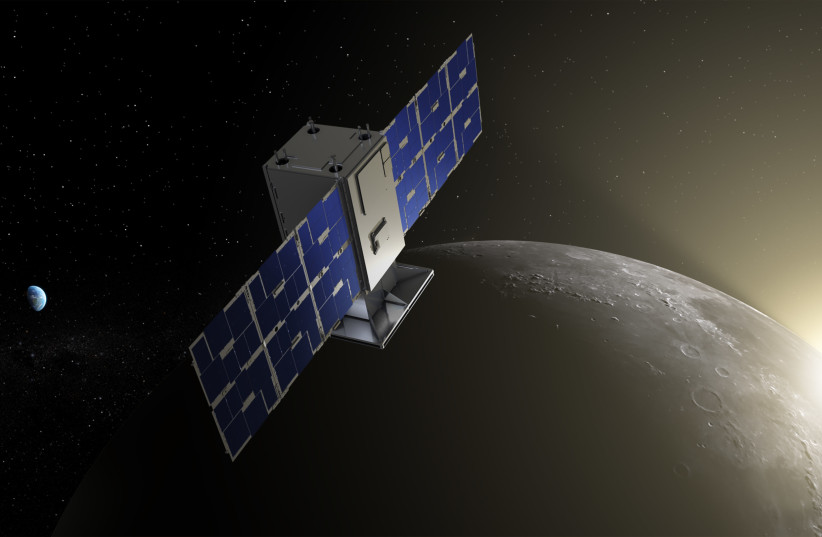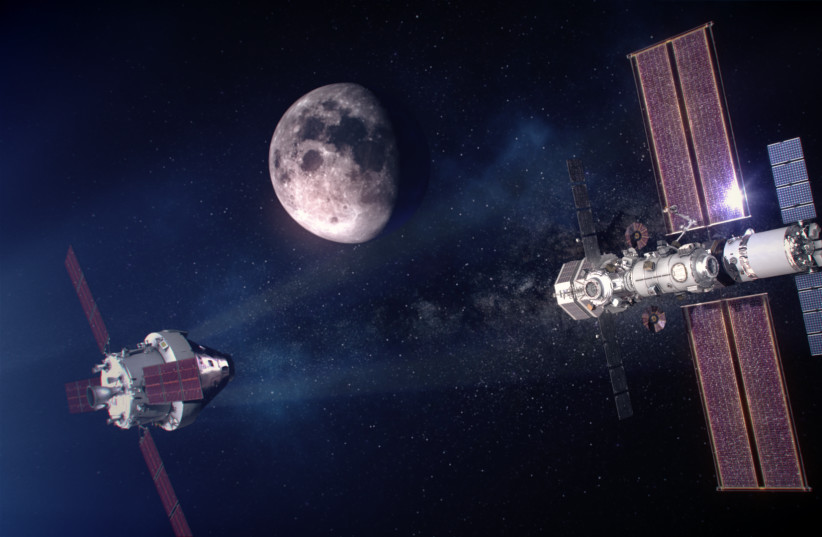NASA launches CAPSTONE to test lunar orbit, tools for 'cosmic GPS'
The CAPSTONE CubeSat will test the near rectilinear halo orbit (NRHO) for the eventual Gateway lunar orbit outpost and innovative navigation technology.

NASA has launched its groundbreaking new orbiter in the Cislunar Autonomous Positioning System Technology Operations and Navigation Experiment (CAPSTONE) on Tuesday in a long-awaited mission that will help prepare for the future of space travel and lunar missions.
The satellite is an important step in testing a planned orbit that will hopefully be able to host NASA's Gateway outpost, a vital part of the eventual return to the Moon in the Artemis mission. Cislunar means the region outside Earth's atmosphere to just beyond the Moon's orbit.
In addition, CAPSTONE will also test important innovative navigational technologies, which will help spacecraft determine their own location in a sort of cosmic GPS.
Shoot for the Moon
The CAPSTONE mission is a big deal, but it will be accomplished by a relatively small satellite known as a CubeSat, which is just about the size of an average microwave oven and weighs just under 25 kilograms.

But it has a big job to do.
It was launched onboard Rocket Lab's Electron rocket from its Launch Complex 1 in Mahia, New Zealand. In around six days, the satellite will be released into space by itself and will begin its four-month planned trip to the Moon.
After that, its real mission begins: Testing the Near Rectilinear Halo Orbit.
The NRHO itself is an elongated halo-shaped orbital path that is set at a very precise point between the gravitational pulls of the Earth and the Moon. This orbit should, in theory, provide a certain degree of stability and balance.
This is important because it makes the orbit the ideal location for NASA's bigger plan: Gateway.
The gate to the beyond
Gateway is a key part of the Artemis mission. Essentially, it is a small space station that will orbit the moon and can serve as a sort of space outpost.
The plan is that this small space station in the lunar orbit can provide extensive support capabilities for the Artemis mission and for future deep space exploration endeavors.

The plan is for Gateway to have spacecraft docking ports, crew living quarters and onboard science investigations to study a number of fields ranging from health to heliophysics. This is important because it would be on Gateway that many key technologies, capabilities and innovations can be developed to support planned explorations of the Moon and Mars.
But setting up Gateway is easier said than done. Crucially, we need to better understand the NRHO in order to launch it and set it up there.
And that is what CAPSTONE is doing.
The CubeSat will spend some six months exploring the orbit and testing its dynamics. This, in turn, will give us more data that will help reduce the risk facing future spacecraft.
In addition, CAPSTONE will also test spacecraft-to-spacecraft navigation technology and ranging capabilities.
This test will be done via the help of another spacecraft orbiting the Moon, NASA's Lunar Reconnaissance Orbiter (LRO), which has been there since 2009. Using CAPSTONE's onboard flight computer and radio, CubeSat should be able to communicate with the LRO and utilize data to pinpoint their distances from one another and calculate how fast the distance between them changes.
To put it more simply, LRO will be a reference point to determine CAPSTONE's location in space.
This test is an important evaluation of CAPSTONE's autonomous navigation software, known as the Cislunar Autonomous Positioning System (the CAPS in CAPSTONE). If it's successful, CAPS will allow spacecraft to pinpoint their location in space without the need to rely exclusively on communication and tracking from Earth as a sort of cosmic GPS.
This is important because currently, so much effort and antenna equipment go into tracking and communicating with spacecraft, which in theory could be used to prioritize scientific data instead. If all this equipment is no longer needed for tracking, it can instead focus on science and data-gathering.
"CAPSTONE is an example of how working with commercial partners is key for NASA's ambitious plans to explore the Moon and beyond."
Jim Reuter
"CAPSTONE is an example of how working with commercial partners is key for NASA's ambitious plans to explore the Moon and beyond," Jim Reuter, associate administrator for the Space Technology Mission Directorate, said in a statement.
"We're thrilled with a successful start to the mission and looking forward to what CAPSTONE will do once it arrives at the Moon."
Follow the launch
Those who want to follow CAPSTONE on its journey can use NASA's interactive real-time 3D data visualization program, Eyes on the Solar System.
A week after launch, it will also be possible to virtually ride alongside CAPSTONE with a simulated view of the solar system.


No comments:
Post a Comment